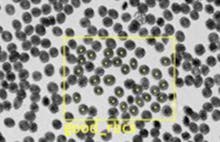Companion Diagnostics (CDx)
Definition, Importance and RoleWhat is a companion diagnostic (CDx)?
A companion diagnostic (CDx) is a medical device or test, which provides information that is essential for the safe and effective use of a particular biological product; this would typically be a highly tailored or targeted drug treatment. It helps a health care professional to know whether the benefits of a drug or treatment for a patient will outweigh any potential serious side effects or risks. These kinds of specific tests have now been around since the mid 1990’s and the majority, around 90%, of companion diagnostics are for oncology treatment. Other types of companion diagnostic include mandatory complete blood count (CBC) for administration of clozapine, a drug used in the treatment of severe schizophrenia.
The test takes into consideration the nature of the illness and additional aspects of the patient’s health and the test itself may be developed alongside the drug it is intended to be used with. Because it gives essential information and is a prerequisite, a companion diagnostic will usually be officially approved for use only as part of the licensing of the drug. The drug must necessarily be used with the test, exactly as per the licensed approval. Information about a companion diagnostic must be included in the therapeutic product labeling.
For example, a doctor might carry out a companion diagnostic test on the patient for a proposed drug to establish if their patient’s tumor has a specific gene change or biomarker which would be targeted by that drug. The outcome of this test effectively determines whether the drug is suitable for the patient or not.
There are also other roles for companion diagnostic tests. These tests are helpful in working out the likelihood of a patient experiencing serious side effects from a treatment. They can also indicate how well a treatment is working, and physicians can use this information to alter the course of treatment, making adjustments so that it is safer or more effective.
An example of preventing serious harm from treatment is the administration of clozapine for which the complete blood count is regularly assessed to prevent the risk of seizures or significant abnormalities in the cell counts.
The difference between a companion diagnostic and a complementary diagnostic
Similarly to a companion diagnostic, a complementary diagnostic is a medical device or test (typically a ‘predictive biomarker assay’) that aids the therapeutic decision-making process and which provides information that is helpful for the safe and effective use of a particular biological product. However, in contrast to a companion diagnostic described above, a complementary diagnostic is not a prerequisite for using the drug, so its use is effectively optional. Information about a complementary diagnostic is usually included in the therapeutic product labeling.
While companion diagnostics are essential for the effective use of a treatment, complementary diagnostics offer additional information to further aid in the decision making around offering a patient a particular treatment.
The role of companion diagnostics for oncology
The companion diagnostic is a technique within the field of study called pharmacogenomics. This refers to the way a person’s entire genome (i.e. their full genetic pattern, not just individual genes) reacts to the use of a drug and the overall potential effect of the drug on that person, including the possible benefits and risk of harmful effects.
Pharmacogenomics and CDx play a significant and increasing role in oncologic medicine. They are a crucial part of offering safe and effective treatments in the care of cancer patients, where there is often a very fine balance between the need to treat a malignant disease as aggressively as possible and the treatment itself causing serious or fatal harm to the patient. Most drugs that are used with a companion diagnostic test are used to target specific tumor mutations.
What are the benefits of companion diagnostics for oncology?
Companion diagnostics for oncology is important because pharmacotherapy responses are widely variable. Even patients with very similar diagnoses often react very differently, in terms of both efficacy and safety, to the same treatment. Clinical studies indicate that as many as 75% of cancer patients do not respond favorably to the same prescribed cancer drug.
Personalized medicine, also known as precision medicine, where the effects of treatment are predicted for the individual patient, has been a significant part of oncology treatment for several decades. As more is learned about biomarkers and molecular diagnostics, companion diagnostics have continued to improve health outcomes for patients.
As scientific research has continued with new clinical trial designs, cancer patients have benefitted from new diagnostic tests and new biologic and gene therapies with steady improvements in survival and quality of life for diseases that have previously had a very poor prognosis.
Companion diagnostics, patient care personalization & reducing the risks of harm
Companion diagnostics and patient care personalization are growing fields, with obvious benefits for patient healthcare outcomes. Another important factor is reducing the risks of treatment, which is increasingly important in improving the experience of patients with severe or life-threatening illness.
As described above, in the example of clozapine, complete blood count (CBC) is a mandatory companion diagnostic outside the field of oncology. Rapid and accurate testing of the CBC before issuing medication helps to make clozapine treatment safer for patients with severe schizophrenia.
In recent years safety has been further enhanced as a result of the scientific and engineering achievements resulting in the ability to perform CBC at point-of-care. Eliminating the risk of seizures and blood cell abnormalities allows patients taking clozapine to continue their treatment without disruption.
One such point-of-care analyzer is OLO: providing CBC without the need for delay or samples to be sent to a laboratory. This improves speed and convenience to the patient while reducing the risk of non-compliance. In turn this can make the necessary monitoring arrangements easier to achieve and reduce the risk of adverse events for the patient.
Discover Sight's Automated CBC Analyzer
Disclaimer: The content of this knowledge post intends to provide general information related to topics that are relevant to blood diagnostics and may not be used in relation to the operation of Sight OLO. For detailed information on the diagnostic parameters and specifications of Sight OLO, please refer to the official Operator's Manual.


